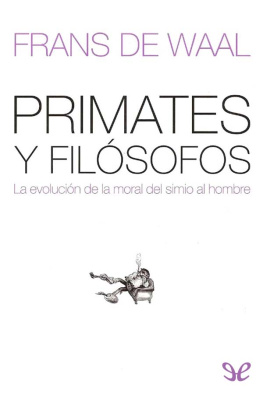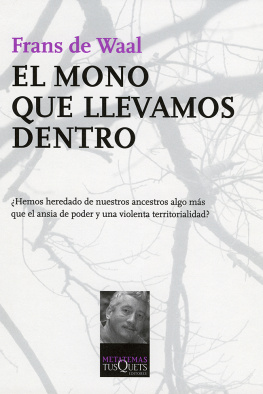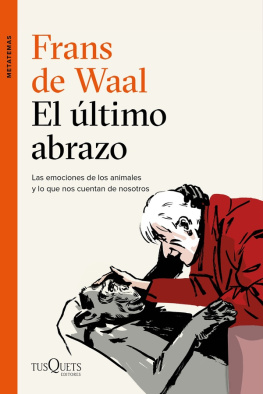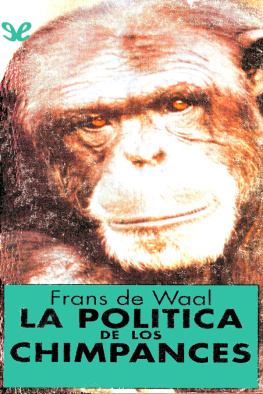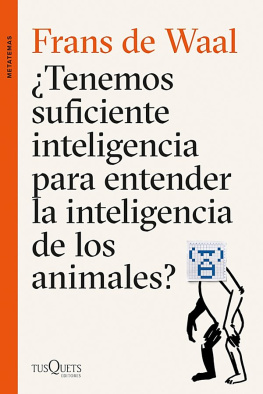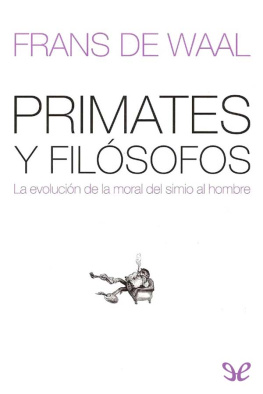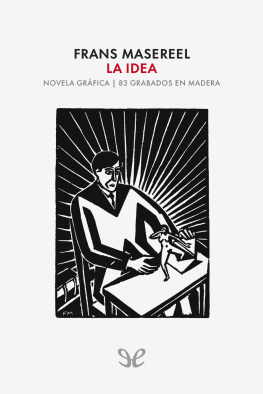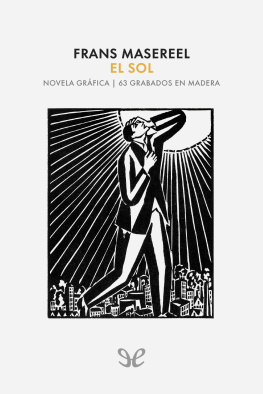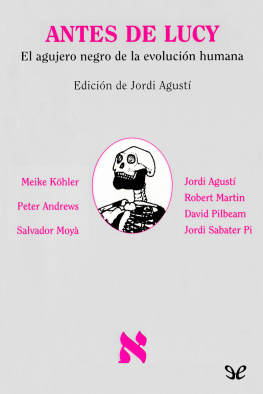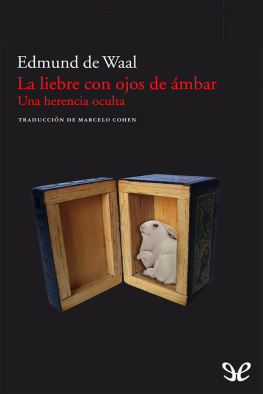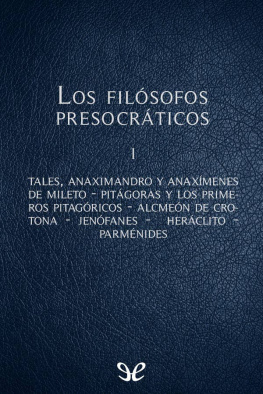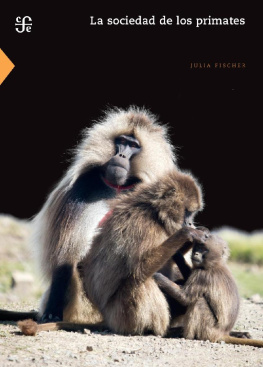BIBLIOGRAFÍA
Adolphs, R., L. Cahill, R. Schul y R. Babinsky, «Impaired declarative memory for emotional material following bilateral amygdala damage in humans», Learning and Memory, n.º 4, 1997, págs. 291-300.
Adolphs, R., H. Damasio, D. Tranel, G. Cooper y A. R. Damasio, «A role for somatosensory cortices in the visual recognition of emotion as revealed by three-dimensional lesión mapping», Journal of Neuroscience, n.º 20, 2000, págs. 2683-2690.
Adolphs, R., D. Tranel, H. Damasio y A. R. Damasio, «Impaired recognition of emotion in facial expressions following bilateral damage to the human amygdala», Nature, n.º 372, 1994, págs. 669-672.
Alexander, R. A., The Biology of Moral Systems, Nueva York, Aldine de Gruyter, 1987.
Arnhart, L., Darwinian Natural Right: The Biological Ethics of Human Nature, Albany, NY, SUNY Press, 1998.
—, «E. O. Wilson has more in common with Thomas Aquinas than he realizes», Christianity Today International, vol. 5, n.º 6, 1999, pág. 36.
Aureli, E, M. Cords y C. P. van Schaik, «Conflict resolution following aggression in gregarious animals: A predictive framework», Animal Behaviour, n.º 64, 2002, págs. 325-343.
Aureli, E., R. Cozzolino, C. Cordischi y S. Scucchi, «Kinoriented redirection among Japanese macaques: An expression of a revenge system?», Animal Behaviour, n.º 44, 1992, págs. 283-291.
Aureli, E. y F. B. M. de Waal, Natural Conflict Resolution, Berkeley, University of California Press, 2000.
Axelrod, R. y W. D. Hamilton, «The evolution of cooperation», Science, n.º 211, 1981, págs. 1390-1396.
Badcock, C. R., The Problem of Altruism: Freudian-Darwinian Solutions, Oxford, Blackwell, 1986.
Bargh, J. A. y T. I. Chartrand, «The Unbearable Automaticity of Being», American Psychologist, n.º 54, 1999, págs. 462-479.
Baron-Cohen, S., «Theory of Mind and autism: A fifteen year review», en S. Baron-Cohen, H. Tager-Flusberg y D. J. Cohén (comps.), Understanding Other Minds, Oxford, Oxford University Press, 2000, págs. 3-20.
—, The Essential Difference, Nueva York, Basic Books, 2003 (trad. cast.: La gran diferencia: cómo son realmente los cerebros de hombres y mujeres, Barcelona, Amat, 2005).
—, «Sex differences in social development: Lessons from autism», en L. A. Leavitt y D. M. B. Hall (comps.), Social and Moral Development: Emerging Evidence on the Toddler Years, Johnson and Johnson Pediatric Institute, 2004, págs. 125-141.
Batson, C. D., «How social an animal? The human capacity for caring», American Psychologist, n.º 45, 1990, págs. 336-346.
Batson, C. D., J. Fultz y P. A. Schoenrade, «Distress and empathy: Two qualitatively distinct vicarious emotions with different motivational consequences», Journal of Personality, n.º 55, 1987, págs. 19-39.
Berreby, D., Us and Them: Understanding Your Tribal Mind, Nueva York, Little Brown, 2005.
Bischof-Kohler, D., «Ober den Zusammenhang von Empathie und der Fahigkeit sich im Spiegel zu erkennen», Schweizerische Zeitschrift für Psychologie, n.º 47, 1988, págs. 147-159.
Boehm, C., «Pacifying interventions at Arnhem Zoo and Gombe», en R. W. Wrangham, W. C. McGrew, F. B. M. de Waal y P. G. Heltne (comps.), Chimpanzee Cultures, Cambridge, MA, Harvard University Press, 1994, págs. 211-226.
—, Hierarchy in the Forest: The Evolution of Egalitarian Behavior, Cambridge, MA, Harvard University Press, 1999.
Bonnie, K. E. y F. B. M. de Waal, «Primate social reciprocity and the origin of gratitude», en R. A. Emmons y M. E. McCullough (comps.), The Psychology of Gratitude, Oxford, Oxford University Press, 2004, págs. 213-229.
Bowlby, J., «The nature of the child’s tie to his mother», International Journal of Psycho-Analysis, n.º 39, 1958, págs. 350-373.
Brauer, J., J. Cali y M. Tomasello, «All great ape species follow gaze to distant locations and around barriers». Journal of Comparative Psychology, n.º 119, 2005, págs. 145-154.
Brosnan, S. E. y F. B. M. de Waal, «Monkeys reject unequal pay», Nature, n.º 425, 2003, págs. 297-299.
Brosnan, S. E. H. Schiff y F. B. M. de Waal, «Tolerance for inequity increases with social closeness in chimpanzees», Proceedings of the Royal Society, serie B, n.º 272, 2005, págs. 253-258.
Burghardt, G. M., «Animal awareness: Current perceptions and historical perspective», American Psychologist, n.º 40, 1985, págs. 905-919.
Byrne, R. W. y A. Whiten, Machiavellian Intelligence: Social Expertise and the Evolution of Intellect in Monkeys, Apes, and Humans, Oxford, Oxford University Press, 1988.
Caldwell, M. C. y D. K. Caldwell, «Epimeletic (Care-Giving) behavior in cetacea», en K. S. Norris (comp.), en K. S. Norris (comp.), Wbales, Dolphins, and Porpoises, Berkeley, University of California Press, 1966, págs. 755-789.
Carr, L. M. Iacoboni, M.-C. Dubeau, J. C. Mazziotta y G. L. Lenzi, «Neural mechanisms of empathy in humans: A relay from neural systems for imitation to limbic areas», Proceedings of the National Academy of Sciences, n.º 100, 2003, págs. 5497-5502.
Cenami Spada, E., «Amorphism, mechanomorphism, and anthropomorphism», en R. Mitchell, N. Thompson y L. Miles (comps.), Anthropomorphism, Anecdotes, and Animals, Albany, NY, SUNY Press, 1997, págs. 37-49.
Cheney, D. L. y R. M. Seyfarth, How Monkeys See the World: Inside the Mind of Another Species, Chicago, University of Chicago Press, 1990.
Church, R. M., «Emotional reactions of rats to the pain of others», Journal of Comparative and Physiological Psychology, n.º 52, 1959, págs. 132-134.
Cohén, S., W. J. Doyle, D. P. Skoner, B. S. Rabin y J. M. Gwaltney, «Social ties and susceptibility to the Common Coid», Journal ofthe American Medical Association, n.º 277, 1997, págs. 1940-1944.
Connor, R. E. y K. S. Norris, «Are dolphins reciprocal altruists?». American Naturalist, n.º 119, 1982, págs. 358-372.
Damasio, A., Descartes’ Error: Emotion, Reason, and the Human Brain, Nueva York, Putnam, 1994 (trad. cast.: El error de Descartes: la emoción, la razón y el cerebro humano, Barcelona, Crítica, 1996).
Darwin, C., The Descent of Man, and Selection in Relation to Sex (1871), Princeton, Princeton University Press, 1982 (trad. cast.: El origen del hombre y la selección en relación al sexo, Madrid, Edaf, 1982).
Dawkins, R., The Selfish Gene, Oxford, Oxford University Press, 1976 (trad. cast.: El gen egoísta, Barcelona, Salvat, 2000).
—, [sin título], Times Literary Supplement, 29 de noviembre de 1996, pág. 13.
—, A Devil’s Chaplain: Reflections on Hope, Lies, Science, and Love, Nueva York, Houghton Mifflin, 2003 (trad. cast.: El capellán del diablo, Barcelona, Gedisa, 2006).
De Gelder, B., J. Snyder, D. Greve, G. Gerard y N. Hadjikhani, «Fear fosters flight: A mechanism for fear contagion when perceiving emotion expressed by a whole body», Proceedings from the National Academy of Sciences, n.º 101, 2004, págs. 16 701 - 16 706.
De Waal, F. B. M., «Sex-differences in the formation of coalitions among chimpanzees», Ethology and Sociobiology, n.º 5, 1984, págs. 239-255.
—, «Food sharing and reciprocal obligations among ehimpanzees», Journal of Human Evolution, n.º 18, 1989a, págs. 433-459.
—, Peacemaking among Primates, Cambridge, MA, Harvard University Press, 1989b.
—, «Complementary methods and convergent evidence in the study of primate social cognition», Behaviour, n.º 118, 1991, págs. 297-320.
—, Good Natured: The Origins of Right and Wrong in Humans and Other Animals, Cambridge, MA, Harvard University Press, 1996 (trad. cast.:

